On the morning of November 1, the 40th Chinese Antarctic Scientific Expedition Team set off from the domestic base dock in Shanghai, embarking on a scientific expedition lasting more than 5 months. During this Antarctic scientific expedition, the clean energy microsystem “Wind-Solar-Hydrogen-Storage-Load”, independently developed by Professor Sun Hongbin’s team in the Department of Electrical Engineering and Applied Electronics , will be installed on the Antarctic ice cap for the first time and undergo testing and application. The goal is to provide on-site empirical support for the large-scale utilization of clean energy in Antarctica and contribute to the implementation of China’s “Green Antarctic Scientific Expedition Strategy”. As a member of the 40th Chinese Antarctic Expedition Team, doctoral students from Professor Sun Hongbin’s team will depart with the ship.

Currently, it can be observed that the energy supply for approximately 40 Antarctic research stations worldwide relies on fossil fuels. With the increasing frequency of Antarctic scientific activities, this Antarctic energy system is no longer suitable for the development needs of “green exploration”. Existing clean energy utilization technologies are not applicable to the harsh natural conditions of extremely low temperatures, strong winds, low pressure, low oxygen, intense ultraviolet radiation, and unique environments such as polar day/night. Therefore, in August 2022, the Polar Research Institute of China appointed Professor Sun Hongbin as the Chief Scientist for Polar Clean Energy. Professor Sun Hongbin’s team, adhering to the philosophy of “truly solving problems and solving real problems”, collaborates with top teams in related fields from Tsinghua University, Taiyuan University of Technology, Polar Research Institute of China, and other domestic institutions, focusing on addressing challenges such as equipment applicability, system safety, and operational efficiency in the utilization of clean energy in polar regions.
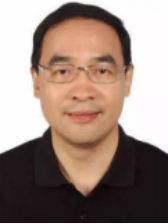
Chief Scientist of Polar Clean Energy, Professor Sun Hongbin
Sun Hongbin, male, from Tiantai, Zhejiang, serves as the Deputy Secretary of the Party Committee and Vice President (in charge of administrative work) at Taiyuan University of Technology, a member of the Academic Committee and a tenured professor at Tsinghua University, the Chief Scientist of the Major Science and Technology Infrastructure for Shanxi Energy Internet, and the Chief Scientist of Polar Clean Energy at the Polar Research Institute of China. He is a national-level teaching master, a Changjiang Scholar awarded by the Ministry of Education, a National Distinguished Youth Scholar, the leader of the Innovative Research Group for “Safety Analysis and Intelligent Regulation of New Power System” supported by the National Natural Science Foundation of China, a leading talent in science and technology for the national “Ten Thousand Talents Program” of the Organization Department of the Central Committee of the Communist Party of China, and an IEEE/IET/CSEE Fellow. He also serves as a member of the IEEE PES Fellow Selection Committee, the Vice Chairman of the Energy Committee of the World Federation of Engineering Organizations (WFEO), the inaugural chairman of the IEEE PES Energy Internet Coordination Committee, the founding chairman of the IEEE Energy Internet and Energy System Integration Conference, and the inaugural editor-in-chief of the journal Energy Internet. He has undertaken more than ten national-level projects, including the 973 Program, the 863 Program, the National Key Research and Development Program, and the National Natural Science Foundation Integrated Project. He has won one first-class National Science and Technology Progress Award (ranked first), one second-class National Technology Invention Award (ranked second), two entries in the Top Ten Scientific and Technological Progress of Chinese Universities, two first-class National Teaching Achievement Awards (ranked first and third), the inaugural Energy Internet Pioneer Award in 2020, and the 2022 Asia-Pacific Engineering Organization Engineer Award (the second recipient in China since 1987). He is also recognized as a Highly Cited Scholar in China by Elsevier (2020-2022), with three monographs, over 200 SCI papers, more than 6,750 SCI citations, and over 20,000 total Google citations. He holds more than 200 authorized Chinese invention patents and over 40 U.S. patents.
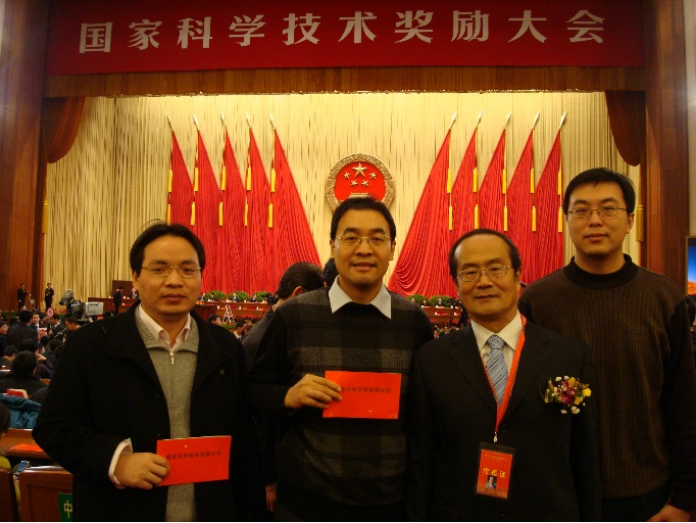
In 2008, Professor Sun Hongbin received the second-class National Technology Invention Award at the Great Hall of the People
Professor Sun Hongbin has long focused on the direction of “complex power grid operation control and energy management”. He has achieved significant results in both Automatic Voltage Control (AVC) and Energy Management System (EMS), making systematic and creative contributions to ensuring China’s power security and supporting the low-carbon transformation of power energy.
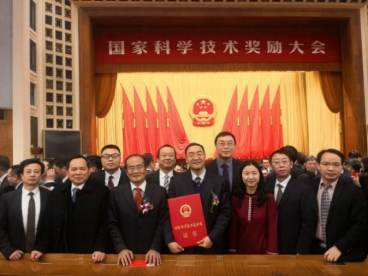
In 2018, Professor Sun Hongbin received the first-class National Science and Technology Progress Award certificate at the Great Hall of the People
(1) In the AVC field: he revealed the mathematical properties of a class of nonlinear master-slave network equations, proposed the theory of complex power grid master-slave division, invented the self-regulating coordinated voltage control technology, and led the development of the world’s first large-scale control software for complex power grid AVC. It has become an essential function in China’s power regulation center, closing the loop control of about 74% of water/thermal power plants, 82% of ultra/high-voltage substations, 57% of centralized wind/solar power integration, and 97% of the nearby power grid of DC and AC ultra-high voltage. This has made significant contributions to ensuring the voltage safety of China’s large-scale new energy access and the operation of major UHV projects, and has been exported to the PJM, the largest power grid in North America (including the capital of the United States and 13 states in the East). For nearly 20 years, the publications in the AVC field have been cited globally, and the results were selected as one of the top ten scientific and technological advances in Chinese universities in 2016. As the first completion person, the achievements won the first-class National Science and Technology Progress Award in 2018, making pioneering contributions to the transition from “artificial” to “automatic” voltage control in complex power grids.
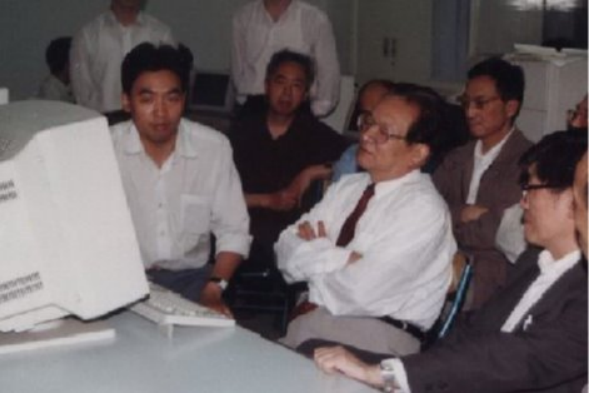
In 1995, Professor Sun Hongbin demonstrated the fully independent intellectual property EMS
(2) In the EMS field: EMS is known as the “brain” of power energy system dispatching decisions. In the stage of “interconnected power grids,” facing the problem of “interconnected power grids but independent dispatching”, he developed a three-dimensional coordinated EMS method, making outstanding contributions to achieving independent and controllable EMS in China. The results were selected as one of the top ten scientific and technological advances in Chinese universities in 2007 and won the second-class National Technology Invention Award in 2008 (ranked second). In the “smart power grid” stage, he proposed the energy management theory and method of smart power grids, significantly improving the reliability and agility of EMS decisions, adapting to the intermittent characteristics of new energy, and winning the first-class China Electric Power Science and Technology Progress Award in 2019 (ranked first) and the first-class Natural Science Award of the Ministry of Education in 2020 (ranked first). In the “comprehensive energy system” stage, he opened up a new direction of multi-energy flow energy management, proposed the energy route theory of multi-energy flow analysis, and developed the first set of Integrated Energy Management System (IEMS) in China and abroad. This won the first-class Beijing Technology Invention Award in 2022 (ranked first) and the first-class China Electric Power Technology Invention Award in 2023 (ranked first). He has continuously promoted the leapfrog development of core technologies in EMS, supporting China’s green and low-carbon transformation of power energy.
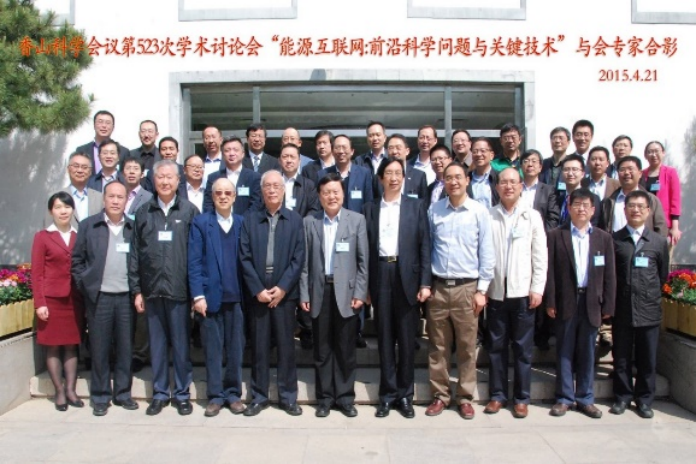
In 2015, Professor Sun Hongbin initiated the Xiangshan Scientific Conference on Energy Internet

















 News & Events
News & Events